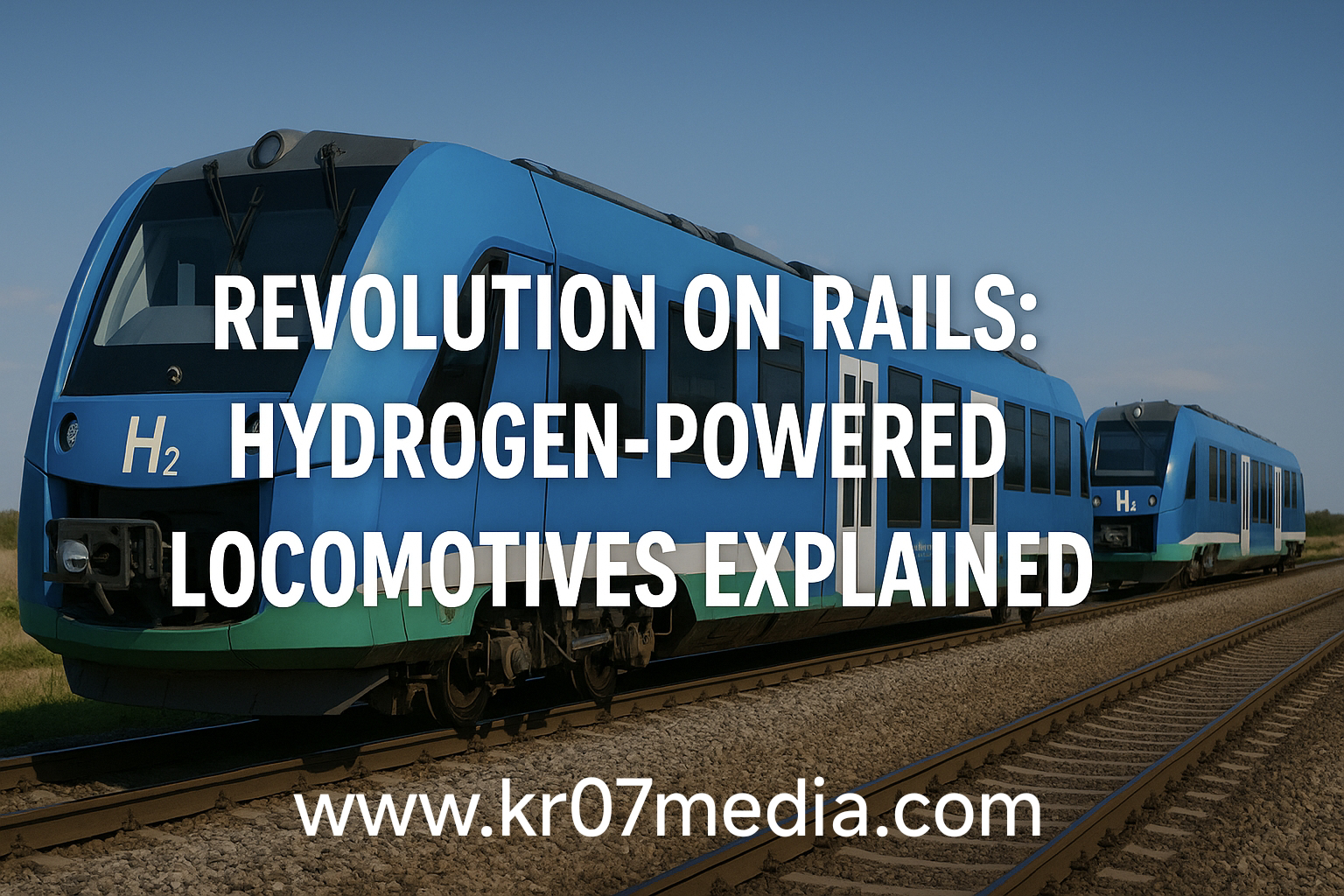In the ongoing global race to reduce carbon emissions and combat climate change, transportation is undergoing a massive shift. While much attention has been paid to electric cars and aircraft, one sector is quietly experiencing a transformative revolution: the railway industry. At the forefront of this transformation is the emergence of hydrogen-powered locomotives—a technology that promises to redefine rail transport for a greener future. This article explores the technology behind hydrogen locomotives, their benefits, challenges, and the global momentum pushing them down the tracks.
The Hydrogen Edge: What Makes It Revolutionary?
Hydrogen-powered trains use hydrogen fuel cells to generate electricity, which then drives electric motors to move the locomotive. The key reaction in a hydrogen fuel cell combines hydrogen with oxygen from the air to produce electricity, water vapor, and heat. The only emission? Pure water.
This stands in stark contrast to traditional diesel locomotives, which emit substantial amounts of CO₂, NOx, and particulate matter. By switching to hydrogen, rail systems can significantly reduce their environmental impact—particularly on routes that are not yet electrified.
How Hydrogen Trains Work: A Simple Breakdown
Hydrogen-powered trains function similarly to battery-electric vehicles in their use of electric traction motors, but the source of electricity is a fuel cell stack, not a battery (or at least not entirely).
1. Hydrogen Storage Tanks: Hydrogen gas is stored on board in high-pressure tanks.
2. Fuel Cell System: The hydrogen is fed into a fuel cell, where it reacts with oxygen.
3. Electricity Generation: This reaction produces electricity, which powers the train’s motors.
4. Battery Support: Excess energy and regenerative braking are often stored in batteries.
5. Exhaust: The only byproduct is water, which is emitted as steam or vapor.
Benefits of Hydrogen Locomotives
1. Zero Emissions
The most obvious benefit is the elimination of harmful tailpipe emissions. This is critical in regions with strict air quality standards or in enclosed environments like tunnels and urban stations.
2. Energy Independence
Hydrogen can be produced domestically from various sources, including renewable energy (green hydrogen), natural gas (with carbon capture), or even waste biomass.
3. Cost-Efficient for Non-Electrified Lines
Electrifying railway lines is capital-intensive and often not economically feasible in rural or less busy routes. Hydrogen trains offer a clean alternative without the need for costly electrification infrastructure.
4. Noise Reduction
Hydrogen fuel cells operate quietly, reducing noise pollution significantly—an important feature in residential and protected areas.
Challenges on the Track
Despite the promise, hydrogen-powered locomotives are not without their hurdles.
1. Hydrogen Production and Infrastructure
Currently, most hydrogen is produced from fossil fuels (grey hydrogen), undermining its environmental benefits. Producing green hydrogen (from water electrolysis using renewable power) remains costly and infrastructure-light.
2. Storage and Transport
Hydrogen has a low volumetric energy density, requiring high-pressure tanks or cryogenic storage. This complicates transport, storage, and refueling infrastructure, especially in remote areas.
3. Energy Efficiency
Hydrogen trains are less energy-efficient than battery-electric trains when you consider the full well-to-wheel lifecycle. Energy losses occur during hydrogen production, compression, storage, and fuel cell conversion.
4. Safety Perceptions
While hydrogen is as safe as other fuels when properly handled, public perception of its flammability (due to historical events like the Hindenburg disaster) can be a barrier.
Global Leaders and Early Adopters
Several countries are piloting or actively rolling out hydrogen trains as part of their decarbonization strategies.
Germany
Germany launched the world’s first hydrogen-powered passenger train in 2018—the Alstom Coradia iLint. In 2022, a full fleet replaced diesel trains in Lower Saxony. The country plans broader adoption as it phases out diesel.
United Kingdom
The UK’s "HydroFLEX" project successfully trialed retrofitted hydrogen trains. Network Rail is evaluating hydrogen solutions for rural and freight lines not slated for electrification.
France
Alstom, a pioneer in hydrogen train technology, has orders from French regions aiming to reduce diesel reliance by 2035.
Japan
Japan is leveraging its hydrogen leadership (including fuel cell vehicles like the Toyota Mirai) to explore hydrogen trains for future mobility, particularly for mountainous and rural routes.
India
Indian Railways has announced plans to develop hydrogen-powered trains as part of its mission to become net-zero by 2030. Pilot projects are expected to begin soon.
Hydrogen vs. Battery-Electric vs. Diesel: A Quick Comparison
The Road (or Rail) Ahead
The future of hydrogen-powered locomotives depends on scaling up hydrogen production, reducing fuel cell costs, and building supportive infrastructure. While battery-electric trains may dominate short urban routes, hydrogen holds a critical edge for long-range, freight, and rural operations.
As nations push toward net-zero emissions goals, and as green hydrogen becomes more affordable, hydrogen locomotives may no longer be a novelty—but a new norm in sustainable transport.
Conclusion
The railways, once powered by coal and then diesel, are now poised to enter a third revolution—fueled by the most abundant element in the universe: hydrogen. Hydrogen-powered locomotives are more than just an engineering marvel—they are a powerful symbol of how innovation and sustainability can work hand in hand. With the right investments and policies, this revolution on rails could chart a cleaner, greener, and more energy-secure future for the world.




